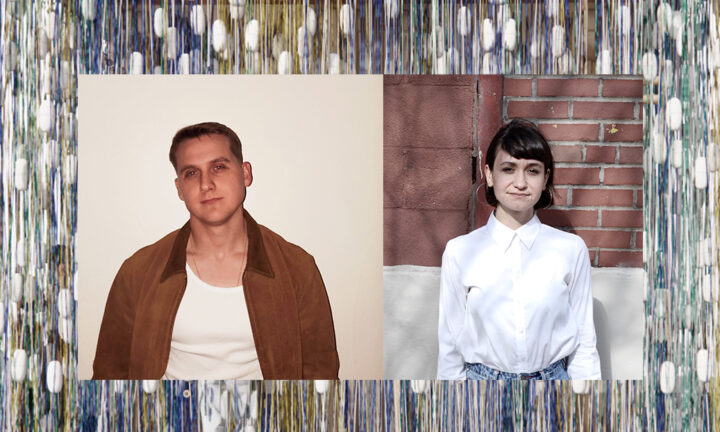Olson Kundig is no stranger to the Festival – and they’re back again this year with another installation – Between Baleen – which asks the simple question, “WHAT IF you were swallowed by a whale?” This fully immersive sensory installation explores the humbling scale of ocean life, paying respect to the greater ecosystem of our local waters.
Between Baleen will be present at the SDF Block Party in Lake Union Park this August 17-18! Hear about what inspires the team’s work in design.
Ozana Gherman (she/her; right) is an architectural designer from Canada working at Olson Kundig. Having originally immigrated from Romania, she is interested in the way people connect to place. Her graduate research examined how history embedded in monument architecture and public space can adapt to new forms of migration and displacement.
With a background in fine art and design, Ozana continues practicing as a textile artist and is interested in the relationship between architecture and weaving. Through her combined practice of handmade craft, sculpture, and architecture, she explores the interface of interior and exterior spaces. In particular, she is interested in how architecture is related to soft materials and uses tapestry-weaving techniques and other labor-intensive textile processes to create forms to inform the built environment.
Like Ozana, Nico Koppe (he/him; left) is also a Canadian-born architectural designer at Olson Kundig. Raised on a farm in Southern Alberta, he attributes his pragmatic design thinking to his agrarian roots. Though challenging in nature, he finds that providing pure and simple solutions to complex problems is what makes thoughtful design endure. In addition to architectural services, Nico continues to hone his creative side through furniture design and building.
Q&A
WHAT IF? in design is…
Nico: The moment a designer understands the nature of a problem, WHAT IF? is the first question they will ask when drawing potential solutions. An architect asks the question internally within their own team, externally to consultants, contractors, and agencies, and ultimately to their client. Creatives often have a WHAT IF? mentality at solving problems, sometimes in unexpected ways. WHAT IF? inherently is an exciting question; it is a vehicle for original thought and it can be grounding.
My favorite thing about my city is…
Ozana: Discovering new neighborhoods and becoming more familiar with communities around the city is one of my favorite things about Seattle. There are many distinct pockets of community that I’m always discovering. As someone that is still new to the city, moving here about 3 years ago, it’s exciting to come across a new area in the city and return to them, becoming more familiar, feeling like you are part of a bigger network, and finding a sense of belonging.
What design object or story most strongly influenced your interest in design?
Nico: Being surrounded by makers on both sides of my family instilled a strong appreciation for thoughtful craft and design. The farmhouse that I was raised in was designed by my uncle Hans, a practicing architect in Calgary, Canada. He presented a scale model to my parents while the concept was being developed and I distinctly remember being astonished when he lifted the roof of the model up, revealing the interior. I believe this was the moment where I became fascinated with the process of creating space.
What is your ultimate goal when it comes to your work? What do you hope to contribute?
Ozana: Creative output and expression is my ultimate goal. There is something about working through an idea and making it a reality that is very fulfilling. The ability to see ideas applied and share that with other people through their reactions, perspectives, collaborative thinking, and interactions feels like a big contribution in our work – a way to share with each other those deeper intuitions that we keep in our minds.
How should community influence design?
Nico: Community members are inherently stakeholders of public design. It is imperative that they have a strong voice in design outcomes. Public opinion matters because that’s who you are designing for; having those opinions translated into the design of public spaces is crucial. This also gives the public a sense of ownership and authorship in their own community.





